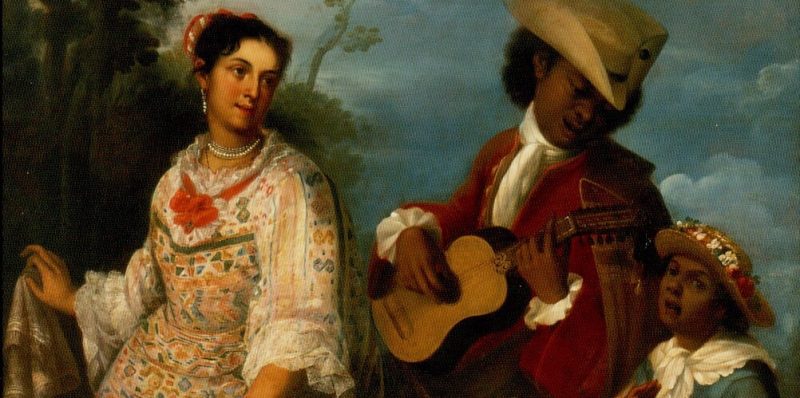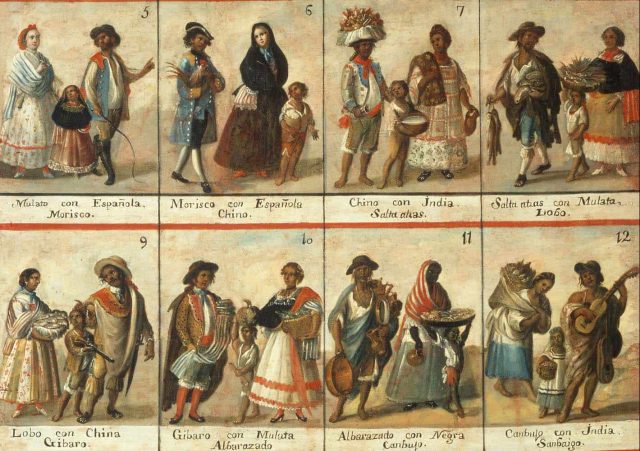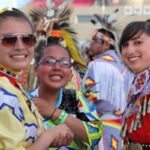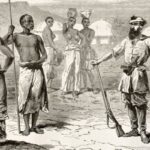We explain what mestizaje is and what its characteristics are. Also, historical examples of miscegenation in America, Asia and Africa.

What is miscegenation?
It is known as mestizaje mixing process that occurs between different ethnic, cultural or racial groups. Its result is the appearance of new genotypes and new cultural traditions, which are known as mestizos.
Throughout history, the term “miscegenation” It was primarily used to describe the genetic and cultural mixing that occurred during European colonization in the Americas, Africa, and Asia. In this context of violence and imposition, mestizos constituted a social category that had a negative and discriminatory connotation.
In a broader sense, mestizaje can also refer to the interaction and fusion of cultures, traditions, customs and social practices between different ethnic or racial groups. This may include interracial marriages, adopting cultural practices from other groups, and creating new identities and forms of cultural expression.
The concept of miscegenation is closely linked to that of race, since both imply the classification of humanity into groups according to physical characteristics that are transmitted hereditarily.
For centuries, the erroneous idea was spread that there were races that were more evolved than others and a division was established between pure races and mixed or mixed races. This categorization encouraged different forms of violence, discrimination and racism.
Characteristics of miscegenation
Among the main characteristics of mestizaje are:
- Historical concept. The concept of miscegenation was consolidated with the processes of colonization and European conquest in the world. Although these encounters generated interracial unions, they were also marked by violence and discrimination.
- Demographic and genetic impact. The union of people of different origins generated great genetic diversity in the world. This meant mixing physical elements, such as skin tones, facial features, hair pigmentation, and other genetic characteristics.
- Cultural change. Miscegenation also led to the mixing of cultural traditions, languages, religions, customs and social practices. This generated new cultural identities and forms of expression that combine elements of the original cultures.
- Identity and belonging. For mixed-race people, identity can be complex and multifaceted. They may identify with multiple cultures and ethnic groups, and their experience may reflect both the opportunities and challenges of cultural integration and diversity.
- Contemporary miscegenation. Today, in increasingly globalized and multicultural societies, miscegenation continues to occur through migrations, interracial marriages, cultural interactions and the creation of new forms of social and cultural identity.
Debates on the concept of miscegenation
Unions between groups of different ethnic or geographic origins existed throughout history and in different parts of the world. However, the concept of miscegenation is used to talk especially about the union of people of European origin with native people during the colonization of America, Asia and Africa.
Currently, this concept is questioned within the academic field for several issues:
- Colonial origin and historical burden. The concept of mestizaje has its roots in the colonial period, where the mixture between Europeans and indigenous peoples occurred in a context of domination and exploitation. Some critics argue that the term reflects a simplified and romanticized view of history, ignoring the unequal power relations and suffering associated with colonization.
- Hiding ethnic diversity. Many times, the term “miscegenation” focuses on the mixture between Europeans and indigenous people, leaving aside other forms of miscegenation, such as mixing with Africans or Asians, and ethnic diversity within Latin America. This can contribute to making different identities and experiences invisible within mestizo societies.
- Political and cultural use. In some contexts, the concept of mestizaje has been used politically to promote a narrative of national unity and overcoming ethnic divisions. However, this can also minimize persistent inequalities based on ethnic and cultural background.
Consequently, different academic and activist groups have proposed alternative approaches to address ethnic and cultural diversity, especially in Latin America. In this sense, The use of other concepts, such as multiculturalism and interculturality, has been consolidated. With them, the aim is to promote the recognition of the specific identities of each ethnic group without necessarily emphasizing the mixture as the only identity reference point.
Mixture in America

Miscegenation in America was a fundamental phenomenon in the history of the continent that took place during the centuries of Spanish conquest and colonization, marked by violence. In addition to involving societies of European and American origin, it included African societies, due to the transatlantic slave trade.
Its consequence was the formation of a colonial society divided into castes categorized under a concept of racial purity that privileged the population of European origin over those of American and African origin. In this sense, colonial society established different categories of mestizos according to the ethnic origin of their ancestry:
- Mestizo: descendant of an indigenous person and a Spanish person.
- Mulatto: descendant of an African person and a Spanish person.
- Baboon: descendant of an African and an indigenous person.
On the other hand, the imposition of European culture and values through evangelization sought to control the native populations and African slaves. However, many indigenous and African groups maintained their customs and identity through different practices, often combined with European elements.
Miscegenation in Asia
The arrival of Europeans to Asia in the 16th and 17th centuries, especially from the Portuguese, Dutch, British, Spanish and French gave rise to a process of miscegenation. As in America, colonization and the European presence implied the imposition of unequal relationships marked by racial and social hierarchies.
However, European colonization in Asia had different characteristics. While in America it was proposed to conquer territories, in Asia The objective was to control the trade routes. For this reason, the colonizers founded commercial enclaves and imposed indirect governments. Their presence, although disruptive and substantially modified the relationships of the time, had less impact than in America on the survival of native societies.
In Asia, the Métis experience varied considerably depending on the regional context. In some cases, mestizos had a special legal and social status and occupied an intermediate position between the European colonizers and the local populations. In others, they were discriminated against or marginalized. The colonial policies and racial attitudes of European colonizers significantly influenced these dynamics.
Miscegenation in Africa
In the case of Africa, miscegenation was influenced by different waves of migration, trade, colonization and slavery.
Before the arrival of Europeans, Africa had extensive trade networks, both within the continent and beyond, with regions such as the Middle East, Asia and Europe. These contacts led to mixing between different ethnic and cultural groups.
Beginning in the 15th century, the Portuguese established trading posts along the African coast, leading to interbreeding between Europeans and Africans in areas such as Cape Verde, Guinea-Bissau, and Angola.
In the 16th century, The transatlantic slave trade involved the forced transfer of millions of Africans to America. There, Africans mixed with Europeans and indigenous people, creating mixed populations.
On the other hand, in South Africa, the arrival of the Dutch, British and other Europeans from the 17th century onwards led to interbreeding with the local populations. The colored (mixed race) in South Africa are the result of mixing between Europeans, Africans and Indians.
On the East African coast, long contacts with Arab and Persian traders resulted in a mixed population known as “Swahili,” combining African and Arab elements in their culture, language, and religion.
document.addEventListener(“DOMContentLoaded”, (e) => {
var sliderContainer, slider;
sliderContainer = document.getElementById(‘block_70706dc7224e346ee75d176e97f1cf63’);
if (typeof initSlider !== ‘function’) {
console.log(‘Swiper haven\’t been loaded’);
sliderContainer.className += ‘ fw scroll-snap’;
return;
};
options = {
direction: ‘horizontal’,
speed: 1000,
slidesPerView: ‘auto’,
// slidesPerGroup: 1,
centerInsufficientSlides: true,
// centeredSlides:true,
spaceBetween: 15,
breakpoints: {
720: {
// centeredSlides: false,
// slidesPerGroup: 2,
spaceBetween: 25
},
},
pagination: {
el: ‘.swiper-pagination’,
type: ‘bullets’,
clickable: true
},
}
slider = initSlider(sliderContainer, options);
})
References
- Leonard, T. M., & Francis, J. M. (2010). The Atlantic World in the Age of Conquest, 1492-1560; Native Americans; Slavery. Encyclopedia of Latin America. Facts On File.
- Magdoff, H., Nowell, C.E., & Webster, R.A. (2023). Western colonialism. Encyclopedia Britannica. https://www.britannica.com/
- The Editors of Encyclopaedia Britannica. (2024). Miscegenation. Encyclopedia Britannica. https://www.britannica.com/





